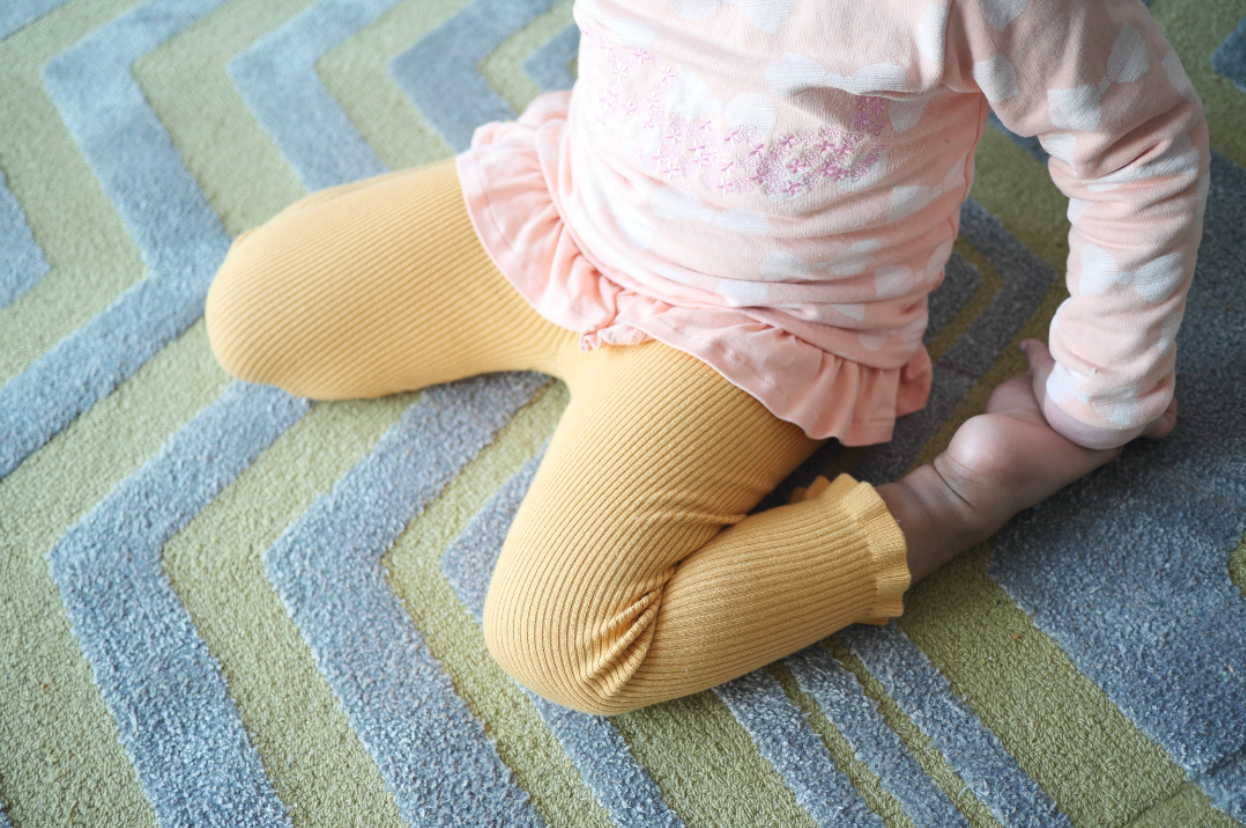
In W-sitting, a child sits with their bottom on the floor, their knees out in front of them, and then legs bent back toward them and rotated
out to the sides. The parts of the body in contact with the ground create a ‘W’ shape. This sitting position is a popular choice
because children find it comfortable, convenient and easier on the body than if they were sitting upright with their legs in front of them
or in several other postures. W-sitting is also often a cause of debate and concern among health professionals, as it may be a causative
factor in several lower limb conditions, as well as a child’s physical development and posture in the early years.
Kids often prefer the W-sitting position because it provides good stability and support compared to other sitting positions, so they use less energy and strength keeping their bodies upright. It also allows them to easily play and explore their surroundings. Specifically:
There are several potential impacts of W-sitting that parents should consider, and these impacts are why podiatrists tend to advise parents to discourage their children from W-sitting, and encourage them to sit cross-legged or in other positions instead. The specific potential drawbacks of regularly W-sitting, or doing so for prolonged periods of time, include:
Encouraging children to adopt alternative sitting positions that promote better posture and musculoskeletal development may help to better support their lower limb health and development. Cross-legged sitting (criss-cross applesauce), side sitting, and using a small stool or cushion to elevate the hips slightly all offer better positions for the lower limbs as they encourage better alignment of the spine, hips, and legs, promoting improved muscle engagement and flexibility.
While it may feel hasslesome to regularly be reminding kids about their sitting position, it can also be very beneficial to them to encourage healthy sitting habits from an early age. Aside from the position of their legs and feet as they’re sitting, ideally children should be sitting up straight with their shoulders back. To help support healthy sitting habits, encouraging kids to participate in regular physical activities that promote strength, flexibility, and posture can also help get the best outcomes.
If you notice that your child frequently adopts the W-sitting position and they begin to experience discomfort, pain, or difficulty with mobility, bring them in to see our Brisbane podiatry team. We’ll assess your child's feet and legs, identify any potential issues whether it’s developmental or an injury, and provide guidance on how to address them along with treatment options where appropriate. If there is a problem, having it detected and cared for early can play a significant role in helping get the best outcomes for your child’s foot and leg health.
At what age do children typically outgrow W-sitting?
Most children naturally transition out of W-sitting as they develop greater core strength and stability. However, if you notice that your child continues to W-sit beyond the age of 3 or 4 years, we recommend encouraging alternative sitting positions.
Is W-sitting a sign of a specific developmental issue?
No, W-sitting is not a definite sign that there is an issue, as in some cases children may simply prefer this position or naturally get themselves into it. In other cases, like in kids with hip dysplasia or joint hypermobility, they may be more prone to adopting W-sitting.
Can occasional W-sitting cause long-term issues?
Occasional W-sitting is unlikely to cause long-term issues, although children should still be discouraged from sitting in this position when it is seen.
Are there any situations where W-sitting might be appropriate?
Some children with specific physical limitations may find W-sitting more comfortable, and it may allow them to sit up for longer periods where they would otherwise be unable to in other positions. In most of these cases, the parents will have had prior conversations with their doctor, podiatrist or other health provider about the best ways to support their child to sit upright.
Is it possible for adults to experience issues from W-sitting as children?
It can be possible if the effects of W-sitting (which are often confounded by other causes) contributed to muscle imbalances, joint instability, or poor postural habits.
| Monday | 7:40am - 6:00pm |
| Tuesday | 7:40am - 6:00pm |
| Wednesday | 7:40am - 6:00pm |
| Thursday |
7:40am - 6:00pm |
| Friday | TEMP CLOSED |
| Saturday | CLOSED |
| Sunday | CLOSED |
Ground Floor, 344 Queen Street,
Brisbane City QLD 4000
| Monday | 7:40am - 6:00pm |
| Tuesday | 7:40am - 6:00pm |
| Wednesday | 7:40am - 6:00pm |
| Thursday |
7:40am - 6:30pm |
| Friday | 7:40am - 5:00pm |
| Saturday | 7:40am - 4:30pm |
| Sunday | CLOSED |
Newmarket Village, 114/400 Newmarket Rd, Newmarket QLD 4051